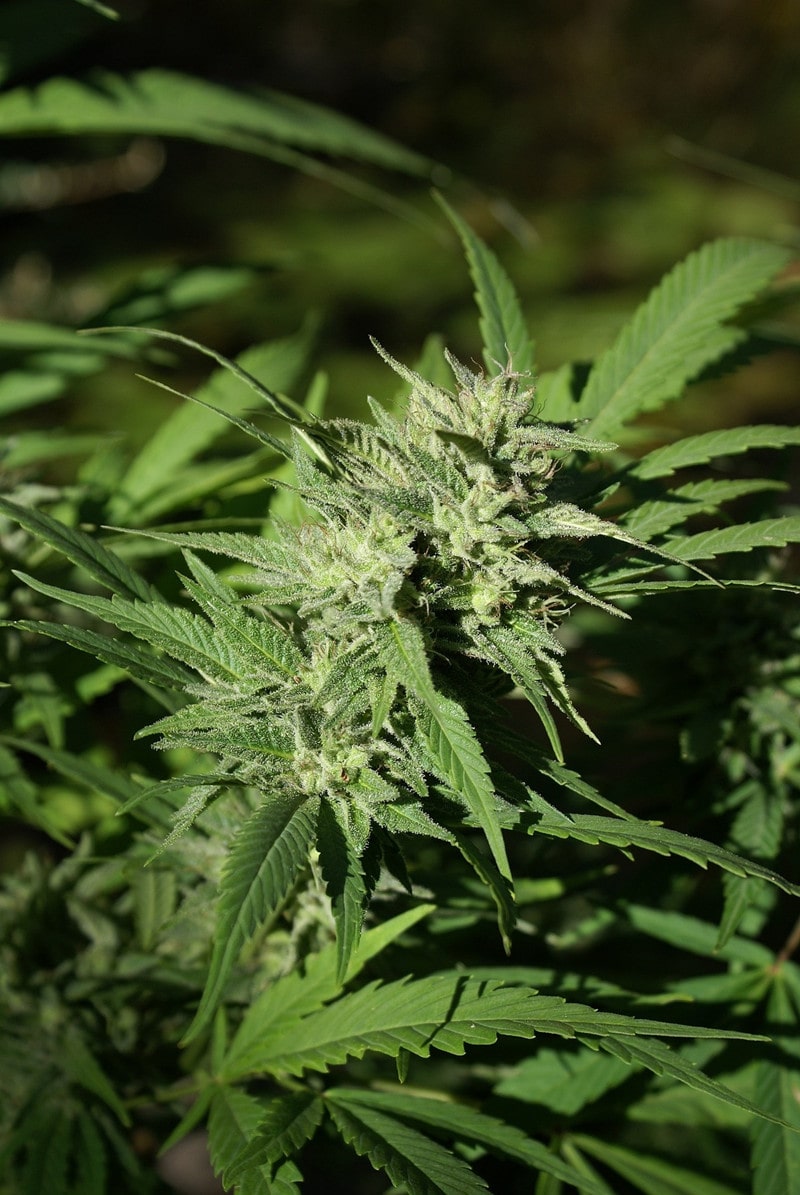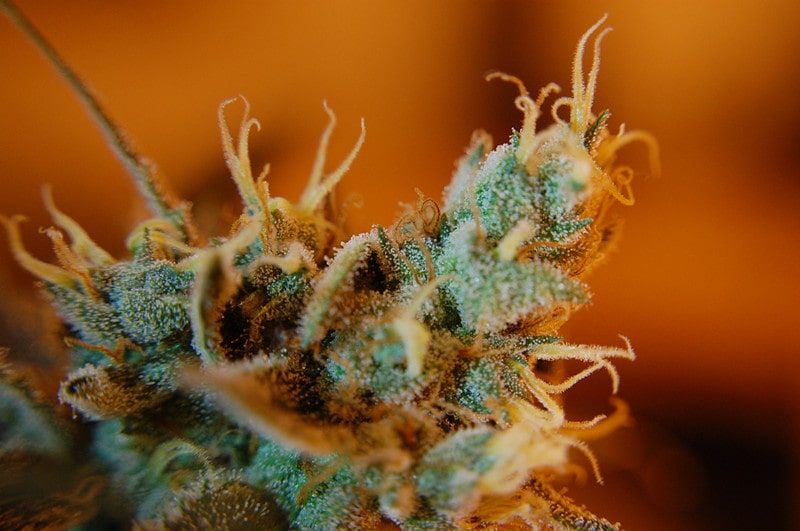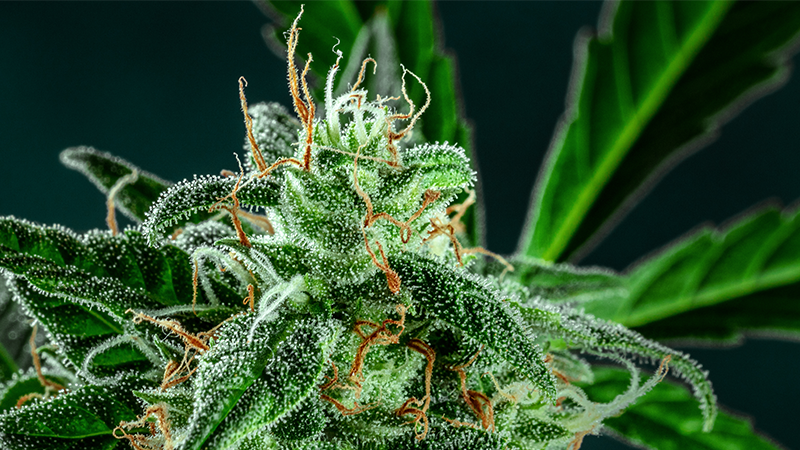Are you having trouble understanding all the convoluted online discussions about cannabis trichomes? What are trichomes? How do you get them? How do you harvest them? We got you. We will help you discover what the trichome buzz is all about in the cannabis community.
Understanding the different stages of trichomes development is essential if you are a cannabis grower, especially if you are looking for a particular effect. This is because this knowledge can help you know the best time to harvest and the optimal levels for your LED grow lights. Even though not all cannabis growers take trichome development seriously, it’s an essential aspect of the harvest that you shouldn’t overlook.
Trichomes are significant indicators if you are a cannabis grower trying to understand the perfect time to harvest some strains. All you need is to know how many weeks to wait for your plant to be ready for harvest. So, what are the stages of trichome development, and when is the best time to harvest your plant? Let’s find out.

What Are Cannabis Trichomes?
Trichomes are sticky outgrowths or resin glands found on the surface of stems, buds, leaves, and stalks of cannabis plants. “Trichome” is a Greek word that means “growth of hair,” which appropriately describes their hair-like appearance. These resin glands usually have a mushroomy shape with a roundish head and a “stalk” where the cannabinoids like THC, CBD, terpenes, and other compounds are made and stored while the plant is flowering. During the pre-flowering stage, you will see the trichome coatings on the sprouts and, in some cases, the leaves of your cannabis plants.
Trichomes are the cream of a cannabis plant. They are the basis of the smokeless revolution in the cannabis community that has saved the lives of many medical marijuana users like Charlotte Figi. An extract of trichomes from a strain rich in CBD healed her from experiencing over 300 seizures every week induced by Dravet syndrome.
Trichomes, aka resin glands, have various stages of development. Because of the chemical compounds found inside them, these different stages determine the “high” one experiences. Let’s now look at the functions of trichomes.
The Functions of Trichomes
Regardless of their small size, the roles of trichomes are vast. Trichomes play various functions based on the plant species. For example, trichomes help keep some crops healthy and protected. Some carnivorous plants, such as the Venus Flytrap, use trichomes to attract and catch prey.
These crystals on weed serve a few protecting functions.
- Cannabis trichomes keep away some garden pests once the female plants begin to develop buds. Cannabis buds can become a tempting food source for caterpillars, aphids, and other pests. Due to their strong, pungent smell, trichomes deter insects from feasting on marijuana buds.
- Cannabis trichomes also keep big predators away from the plant. If you have ever grown marijuana outdoors, you know that rabbits, deer, chipmunks, and squirrels like to snack on budding weed. The resinous, sticky trichomes on buds help prevent these animals from destroying your crops.
- Mature trichomes guard marijuana crops against environmental elements. They protect the weed from the sun’s or your LED lights’ intense UV rays and act as a natural protective screen. Furthermore, when there is a strong wind, trichomes can protect your weed from damaging breezes. Also, trichomes might regulate the crop’s temperature by preventing frost from reaching leaf cells. Likewise, it can help minimize evaporation when there is high-temperature exposure.

How to Examine Trichomes
Since growing weed is a highly delicate process, carefully observing the development of trichomes during the flowering stage is essential. When you monitor the opacity and color of trichomes, you can easily determine the best time to harvest for different user experiences. However, it can be a challenge to know when a trichome is clear or cloudy. Trichomes go through various stages. If you are a first-time grower, you can benefit from referencing a fully-developed trichome harvest chart.
Trichome sizes range from 10 to 500 micrometers. Due to their small size, you can best observe trichomes using a device that can magnify them at least 30 to 120 times. When observed under the microscope, trichomes look like tiny hairs on the surface of a marijuana plant. As a grower, you should focus on the ones that look like mushrooms. This is because they are the ones that possess the majority of medicinal and psychoactive chemicals that make weed such a unique and desirable crop. Observation will help you accurately estimate the plant’s stage and if it’s ready to harvest.
Types of Cannabis Trichomes
There are three types of trichomes depending on the chemical balance and maturity of marijuana crops. Knowing the varieties is critical for successful harvests. Growers should focus on these three trichome types:
- Bulbous trichomes
Bulbous trichomes are the tiniest type. You can’t see bulbous trichomes with your naked eye. To know how small they are, consider this: the thickness of these trichomes is at least 15 micrometers, while the size of a single human hair is approximately 50 micrometers thick. Due to their small size, bulbous trichomes contain minimal terpenes, cannabinoids, and flavonoids. Many growers use this trichomes kind as an early sign for harvesting.
- Capitate trichomes
Capitate trichomes are a bit larger than the bulbous kind. Likewise, they cover the entire weed plant. It’s good to note that they have a high level of chemical compounds. This type of trichome takes on the traditional mushroom-like shape. Typically, the “hairs” grow to a size of up to 25-100 micrometers and have 8-16 cells.
- Capitate-stalked trichomes
Capitate-stalked trichomes are the largest and fullest type. So when growers talk about weed trichomes, they usually refer to this kind. First, magic happens here! Since they are the largest, they contain the highest level of cannabinoids and other chemicals. Second, it’s possible to see capitate-stalked trichomes with your naked eyes since they have a size of 50-500 micrometers.
Also, capitate-stalked trichomes have that mushroom-like shape with a huge bulbous head and single stalk. The top part has the highest concentration of terpenes, cannabinoids, and flavonoids of the entire marijuana plant.
Stages of Trichome Development
Trichome development and maturation change weed’s effectiveness and CBD/THC balance. Every grower should know the various stages of trichome development to produce cannabis products that are perfect for the medical and recreational marijuana industries. In every stage, the trichomes change color. That’s why the trichome harvest chart is an essential point of reference for new cultivators. Here are the four stages of trichomes development.
- Clear Trichomes
These trichomes indicate crops that are nearing their highest concentration level. As the name suggests, these trichomes are translucent. This is because the weed is still producing resin in the glands and filling them slowly. During this stage, trichomes don’t have enough potency. As a result, harvesting at this stage can negatively affect the yield.
- Milky Trichomes
Once a trichome turns cloudy, the THC levels reach their ideal flavor and potency. During this stage, the weed has not matured; blossoms will appear small without the rich aroma that users expect. When milky trichomes are covering the crop, the levels of THC are very high compared to the CBD concentration. Therefore, the psychoactive effects of weed are more prevalent.
It’s always great to harvest Sativa plants when half the trichomes are milky. Doing so may result in the highest level of THC and the lowest concentration of CBD for that specific plant. Furthermore, this will lead to the most energizing and uplifting effects, thus giving the real Sativa feel for the user.

- Amber Trichomes
Trichomes will start turning amber in conjunction with cloudy trichomes. A crop covered primarily in amber trichomes will contain high levels of CBD. This is because most of the THC in the crop will have naturally changed to cannabinol (CBN). You can identify this stage by noting the absence of little white hairs on the bud.
In this stage, the hairs have a brown or dark orange color. Usually, this reduces the psychoactive effects of weed consumption and provides a much more relaxing and sleep-inducing effect for the user. Cannabis harvested at this stage is perfect for medicinal use because of its capability to reduce pain and treat insomnia. Most Indica strains require cultivators to gather the buds when approximately 60% of the trichomes show an amber color.
- Mixed Trichomes
You need to treat hybrids differently than Indica or Sativa strains. This is because they usually have a mixture ranging from 90/10, 80/20, 70/30, 60/40, or even 50/50 splits of Indica and Sativa compounds.
The best time to harvest Sativa dominant hybrid plants is when at least 70% of the trichomes are milky, with the remaining starting to turn amber. The milky trichomes offer more stimulating and uplifting clear-head cerebral effects. On the other hand, the amber trichomes offer more intense or heavier results.
When cultivating Indica-dominant strains, it’s good to wait until approximately 60% of the trichomes turn amber. This way, the effects will result in more physical relaxation and couchlock compared to the stimulating feeling from cloudy trichomes.
Also, you can harvest at a 50/50 split of trichomes, where half are amber and the other half cloudy. This combination will result in an even division of physical and cerebral effects.
Getting the Best Out of Cannabis Trichomes
Growing optimal trichomes is an integral part of a successful harvest because they are where cannabinoids and terpenes are made and stored. Therefore, understanding and observing trichome development is one way to manipulate cannabis crops with your LED grow lights to provide the desired effects and THC levels. Remember, environment, plant genetics, lighting, nutrition, and cannabinoid, as well as terpene level, will impact the strain effects. Happy growing!

